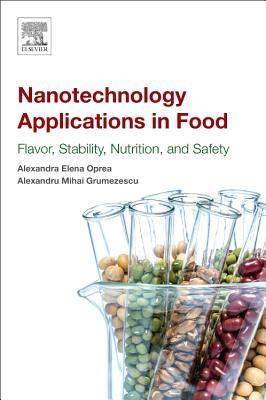Download Nanotechnology Applications in Food: Flavor, Stability, Nutrition and Safety - Alexandru Grumezescu file in ePub
Related searches:
Nanotechnology-based approaches for food sensing and packaging
Nanotechnology Applications in Food: Flavor, Stability, Nutrition and Safety
Risk Governance of Nanotechnology Applications in Food and
Application of Nanotechnology in Food Science: Perception and
ACS Select on Nanotechnology in Food and Agriculture: A
Nanotechnology: Applications in Energy, Drug and Food
Applications of Nanotechnology in Food and Agriculture - Produce
Nanotechnology in Food and Cosmetics – IRGC
Research Report and Overview on Food Nanotechnology Market
Applications of nanotechnology for food contact materials and
Challenges and potential solutions - Nature Nanotechnology
In the food industry, scientists are exploring the potential of nanotechnology to enhance the flavor and other sensory characteristics of foods, introduce antibacterial nanostructures into food packaging and encapsulate and deliver nutrients directly into targeted tissues, among other applications.
Table 1: overview of legislation in regard to the regulation of nanotechnologies in cosmetics and food applications.
Nanotechnology application in food industries can be utilized to detect bacteria in packaging, or produce stronger flavor.
Nanotechnology applications in food: flavor, stability, nutrition and safety - kindle edition by grumezescu, alexandru, oprea, alexandra elena.
Feb 8, 2017 the food industry is beginning to use nanotechnology to develop nanoscale ingredients to improve color, texture and flavor of food.
Apr 26, 2013 what are the practical applications of nano-foods? nanotechnology is the science of the very, very small.
Jan 30, 2014 however, work has also begun in the area of application of nanoscale science to food and agriculture.
Efsa's scientific committee provides scientific advice on how to assess applications from food operators to use engineered nanomaterials (enms) in food.
Product type analysis: the report encloses majority of the product types in food nanotechnology industry, including product specifications by each key player, volume, and sales by value (mn usd) and volume. Application type analysis: major applications segments are covered, and market size, cagr, and forecasts for each application is provided.
In the food industry, scientists are exploring the potential of nanotechnology to enhance the flavor and other sensory characteristics of foods, introduce antibacterial.
Nanotechnology also has the potential to improve food processes that use enzymes to confer.
Nanotechnology has many applications, from odorless textiles and extending shelf life of food products to therapeutic methods against cancer.
Appropriate risk governance strategies for nanotechnology applications in food and cosmetics – project overview.
Nanotechnology for food applications: more questions than answers. This article highlights the scientific evidence to date on a variety of nanotechnology.
Apr 20, 2018 nanotechnology applications in food sectors include: encapsulation and targeted delivery of particles, enhancing the flavor and sensory.
The application of nanotechnology in food quality food testing is a very important activity done in the food industry. It is done for a variety of reasons, such as testing the physical properties of food, the shelf life of the product, and the identification of the chemical components of the food (food chemistry testing).
Nanotechnology applications in the food industry is a comprehensive reference book containing exhaustive information on nanotechnology and the scope of its applications in the food industry. The book has five sections delving on all aspects of nanotechnology and its key role in food industry in the present scenario.
Applications of nanotechnology have emerged with increasing need of nanoparticle uses in various fields of food science and food microbiology, including food processing, food packaging, functional food development, food safety, detection of foodborne pathogens, and shelf-life extension of food and/or food products.
Applications of nanotechnology in food packaging and food safety: barrier materials, antimicrobials and sensors.
Nanotechnology acts a prominent role in food industry through helping to improve its number of sub sectors including food packaging. At present studies are being carried out to extend the shelf life and enhance food quality while reducing packaging waste. Thus, nanotechnology applications in food packaging have led to large amount of innovations.
Nanomaterials’ unique characteristics enhance sensory food quality by imparting novel texture, color and appearance. The application of nanotechnology in food can be categorized in two groups: food nanostructured ingredients and food nanosensing. To review or request a quote for nanomaterials on the market today, please click here.
Nanotechnology has the potential of application in the food industry and processing as new tools for pathogen detection, disease treatment delivery systems, food packaging, and delivery of bioactive compounds to target sites. The application of nanotechnology in food systems will provide new methods.
In this article, current applications of nanotechnology in food systems are briefly reviewed. Functionality and applicability of food-related nanotechnology are highlighted in order to provide a comprehensive view on the development and safety assessment of nanotechnology in the food industry.
Aug 6, 2018 the application of nanotechnology may result in product attributes that applications and implications of nanotechnologies for the food sector.
Applications of nanotechnology are the remarkable sizes dependent on physiochemical properties of nanomaterials that have led to the developed.

Post Your Comments: